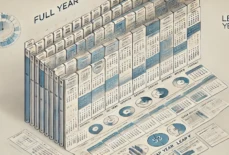In the world of construction, the strength and durability of structures are paramount. Reinforced concrete, with its blend of concrete’s compressive strength and steel’s tensile strength, stands as a cornerstone of modern construction. At the heart of this synergy lies a crucial process known as rebar detailing. In this comprehensive guide, we will delve into the fascinating world of rebar detailing, exploring its significance, intricacies, technology-driven advancements, and its pivotal role in shaping the buildings and infrastructure we rely on every day.
1. Understanding Rebar Detailing
1.1 What is Rebar Detailing?
Rebar detailing, short for reinforcing bar detailing, is the process of creating detailed drawings and schedules for the placement and configuration of reinforcing steel bars (rebar) in a concrete structure. These bars are strategically positioned to provide tensile strength to the concrete, enhancing its overall performance and durability. Rebar detailing ensures that the concrete structure can withstand various loads, including those from gravity, seismic activity, and environmental factors.
1.2 The Importance of Rebar Detailing
The significance of rebar detailing can be summarized through several critical aspects:
A. Structural Integrity: Proper rebar detailing ensures that the concrete structure possesses the required strength and can withstand expected loads, preventing structural failures.
B. Safety: Reinforced concrete structures that meet design specifications and adhere to detailing guidelines are safer for occupants and passersby.
C. Durability: Correctly placed rebar helps concrete withstand long-term wear and tear, making structures more durable and resilient.
D. Cost-Efficiency: Accurate detailing minimizes waste, reduces material costs, and saves on labor by avoiding rework during construction.
2. The Process of Rebar Detailing
2.1 Pre-Detailing Phase
Before the actual detailing process begins, it is essential to establish a solid foundation. The pre-detailing phase involves comprehensive planning and understanding the project’s specific requirements:
A. Reviewing Structural and Architectural Plans: Detailers meticulously review the architectural and structural engineering drawings to comprehend the design intent and the load-carrying requirements of the structure.
B. Site Assessment: A site visit may be necessary to evaluate site conditions, constraints, and any potential challenges that could impact the detailing process.
C. Project Timeline: A well-defined project timeline is essential to ensure that the rebar detailing aligns with the construction schedule.
2.2 Detailing Phase
The core of rebar detailing involves the creation of precise drawings and schedules that guide the placement of reinforcing bars within the concrete structure. This phase encompasses several critical tasks:
A. Rebar Modeling: Detailers utilize specialized software to create 3D models of the structure, indicating the placement and configuration of rebar.
B. Creating Rebar Drawings: Detailers generate detailed drawings, also known as shop drawings, that specify the size, length, shape, spacing, and placement of each rebar element within the structure.
C. Rebar Schedules: Rebar schedules provide an itemized list of all rebar elements, including their dimensions, quantities, and placement details.
D. Development Length and Splicing: Detailers calculate the necessary development length for each rebar to ensure proper anchorage, as well as specify splicing locations and methods.
2.3 Quality Assurance and Review
To maintain accuracy and compliance with industry standards, the detailing process involves several layers of review:
A. Internal Review: The detailing team conducts an internal review, meticulously cross-checking the drawings and schedules for errors or inconsistencies.
B. Client Review: The client or project manager reviews the detailing documents to ensure they align with project specifications and requirements.
C. Peer Review: A peer review by another experienced rebar detailer or engineer adds an extra layer of quality control.
2.4 Final Approval
Once all reviews and revisions are complete, the final rebar detailing documents are submitted for approval. Approval signifies that the project is ready to proceed to the fabrication and construction phase.
3. The Role of Technology in Rebar Detailing
3.1 Computer-Aided Design (CAD) Software
CAD software has revolutionized rebar detailing, making the process more efficient and accurate. CAD tools allow detailers to create precise 2D and 3D drawings, make revisions easily, and generate accurate rebar schedules. Popular CAD software for rebar detailing includes AutoCAD, Revit, and Tekla Structures.
3.2 Building Information Modeling (BIM)
BIM technology integrates architectural, structural, and MEP (mechanical, electrical, and plumbing) information into a unified model. In rebar detailing, BIM enables real-time collaboration among architects, engineers, and detailers, reducing conflicts and errors during construction. BIM also facilitates clash detection, helping identify and resolve design conflicts before construction begins.
3.3 3D Laser Scanning
3D laser scanning technology captures precise measurements of existing structures or site conditions. This data can be imported into CAD or BIM software, streamlining the rebar detailing process for renovation or retrofit projects.
3.4 Cloud-Based Collaboration Tools
Cloud-based collaboration tools facilitate real-time communication, file sharing, and project management among detailers, fabricators, and contractors, enhancing efficiency and reducing delays.
4. Challenges and Future Trends in Rebar Detailing
4.1 Challenges in Rebar Detailing
Rebar detailing faces several challenges that impact the industry:
A. Skilled Labor Shortage: There is a shortage of experienced rebar detailers, leading to increased competition for talent.
B. Software Compatibility: Integrating various software platforms can be challenging, requiring careful coordination.
C. Project Complexity: Increasingly complex architectural and structural designs demand a higher level of detailing precision.
4.2 Future Trends in Rebar Detailing
To address these challenges and enhance efficiency, several trends are shaping the future of rebar detailing:
A. Automation: Detailing software is becoming more automated, reducing the need for manual data entry and repetitive tasks.
B. Artificial Intelligence (AI): AI-driven tools can analyze project data and suggest design optimizations and error checks.
C. Advanced Materials: The development of new reinforcing materials, such as carbon fiber-reinforced polymers, is changing rebar detailing practices.
D. Sustainable Practices: Detailing will increasingly incorporate sustainable practices, optimizing material use and reducing environmental impact.
5. Conclusion
Rebar detailing is the unsung hero of construction, ensuring that concrete structures possess the strength and durability needed to withstand the test of time. With the aid of cutting-edge technology and a forward-looking approach, the field is poised for further advancements, promising more sustainable, efficient, and collaborative construction practices. As we continue to build the infrastructure and buildings of tomorrow, rebar detailing will remain a critical element in shaping the structural framework of our built environment, one that stands tall and resilient for generations to come.































































